The Offside rule is that great mysterious concept of football, especially for the new football fans. Yet, it is the one mechanism applied to keep the game fair and competitive. This article will simplify the concept with step-by-step examples, then analyze common exceptions and end with some help from technology in the form of VAR.
What Is Offside?
Simply put, an attacker is in an offside position when his position is unjustly advantaged by standing closer to the opponent’s goal line with fewer than two opponents between him and the goal.
According to the FIFA Laws of the Game, a player is in an offside position if:
- They are nearer to the opponent’s goal line than the ball and second-last defender,
- When the ball is played or touched by a teammate.
However, standing at this position does not constitute an offense. The player in that position will have to become actively involved in the play- maybe by receiving the ball, interfering with an opponent against whom he stands, or frightening the goalkeeper from watching for the ball.
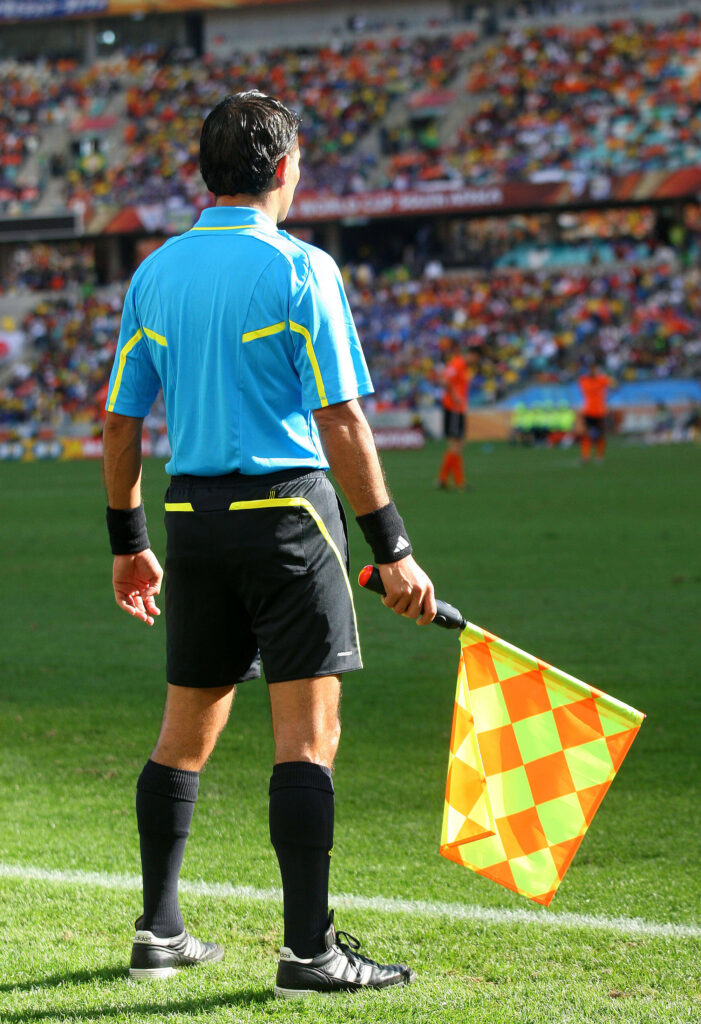
Step-by-Step: Offside in Action
Let’s walk through a simple example.
Example 1:
- Team A is attacking.
- Player 1 has the ball and is about to pass.
- Player 2, a teammate, is standing behind the last defender of Team B — only the goalkeeper is closer to the goal than Player 2.
- When Player 1 passes the ball, Player 2 runs onto it and scores.
Is this offside?
Yes, Player 2 was in an offside position at the moment the ball was passed and became actively involved by playing the ball and scoring.
Example 2:
- Same setup, but Player 2 is in line with the last defender when the ball is passed.
Offside?
No, being level with the last defender is not offside.
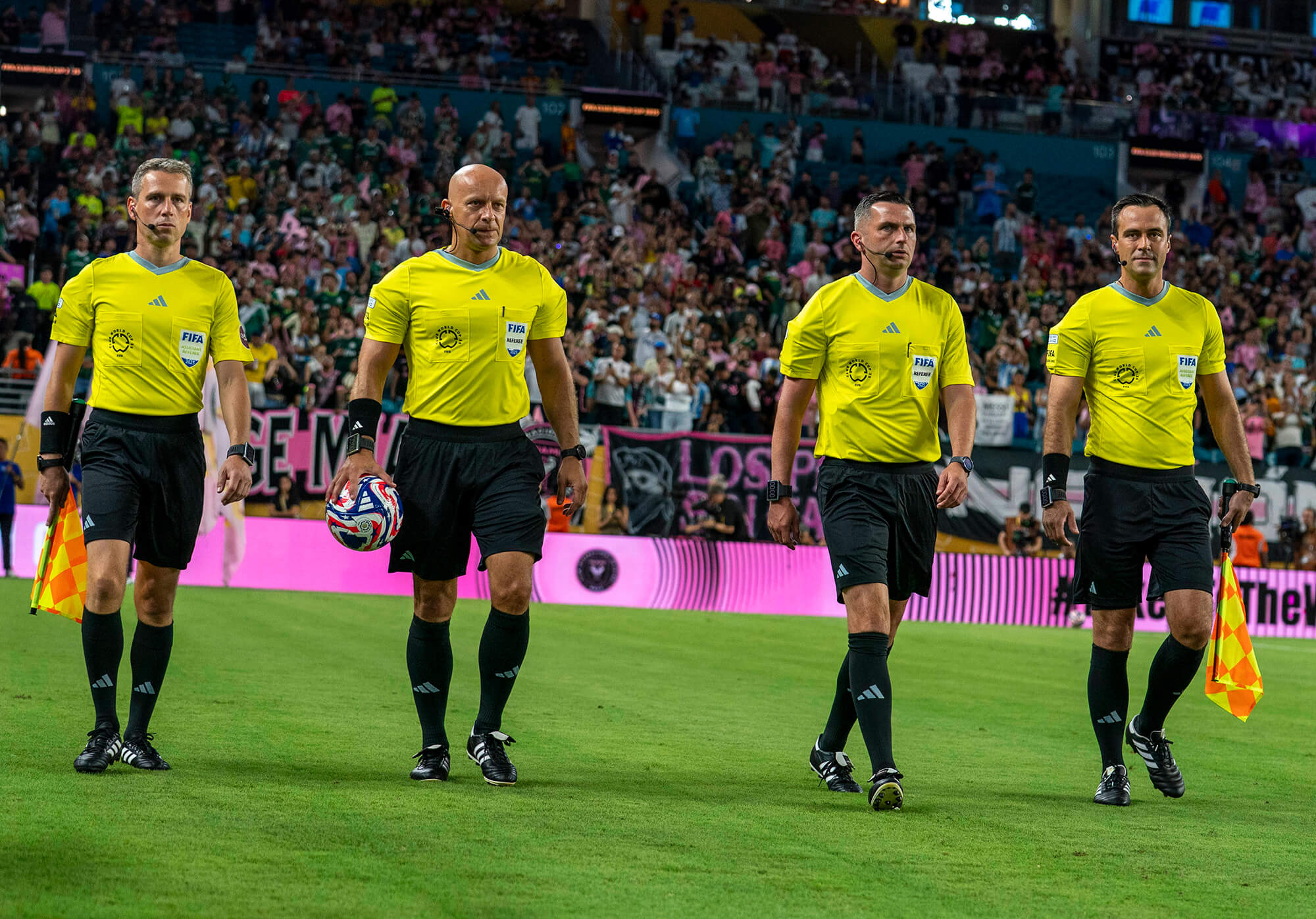
Example 3:
- Player 2 is offside, but the ball goes to another teammate, Player 3, who was onside.
Offside?
No, because the offside player didn’t touch the ball or interfere with play.
The Offside Line
The offside line is determined by the second-last defender (usually the last outfield player, since the goalkeeper is typically closest to goal). The line is imaginary but visible to referees and, now, VAR technology.
If the attacker is level with the second-last defender at the moment the ball is played, they are considered onside.
Timing is everything. Referees judge whether the attacker was offside at the moment the ball was passed, not when they receive it.
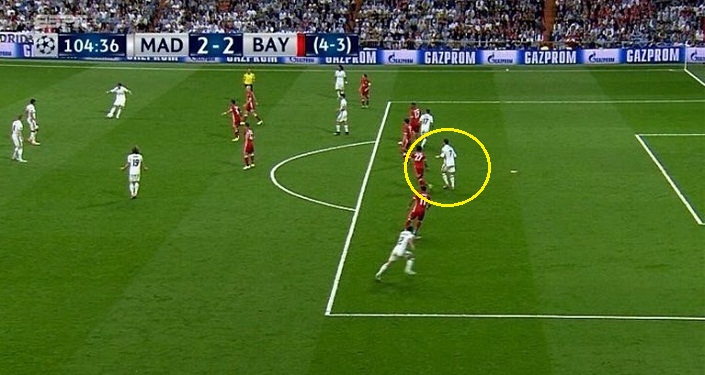
Exceptions to the Rule
The offside rule has a few important exceptions. A player cannot be offside in the following situations:
1. Goal Kick
If a teammate kicks the ball from a goal kick, no offside offense can occur — even if the attacker is standing behind the defense.
2. Throw-in
Similarly, a player cannot be offside from a throw-in.
3. Corner Kick
There is also no offside offense from a corner kick.
These exceptions are designed to make certain restarts flow freely and avoid unnecessary interruptions. Understanding the offside rule can be tricky, but a few scenarios help clarify it. A player is considered offside if they are ahead of the second-last defender and receive a pass from a teammate. However, if the player is level with the second-last defender, they are not offside. Similarly, a player who is ahead of the defenders but does not interfere with play or touch the ball is not penalized. Lastly, if the ball comes from an opponent rather than a teammate, the offside rule does not apply.

What Does “Interfering With Play” Mean?
This is where things often get tricky. A player can be in an offside position but not penalized unless they:
- Play or touch the ball
- Block the view or movement of a defender or goalkeeper
- Make a movement that distracts an opponent
This means players must be careful not just with their position, but also with their actions.
Role of Assistant Referees
Before technology, the assistant referees (linesmen) judged offsides in real-time. They would raise a flag if they saw an attacker in an offside position at the moment the ball was played and then interfering in play.
However, due to the speed of modern football, this has become extremely difficult. That’s where VAR steps in.
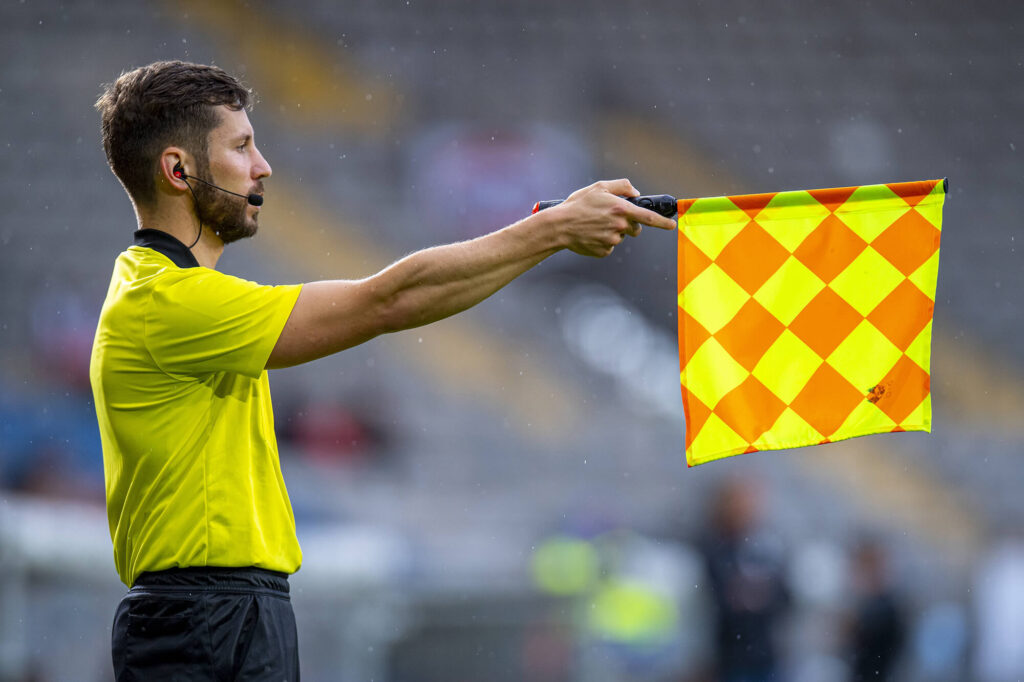
VAR and the Offside Rule
VAR (Video Assistant Referee) has changed how offsides are enforced. VAR reviews every goal and can disallow a goal if an offside offense is detected during the build-up. Read all about VAR on this link.
Using high-definition cameras and software, VAR can draw offside lines on the pitch to see exactly where the attacker was when the pass was made. Even a player’s shoulder or toe can make them offside if it’s beyond the last defender. While this ensures accuracy, it has also sparked debate — especially when very marginal offsides (like a few millimeters) lead to goals being ruled out.
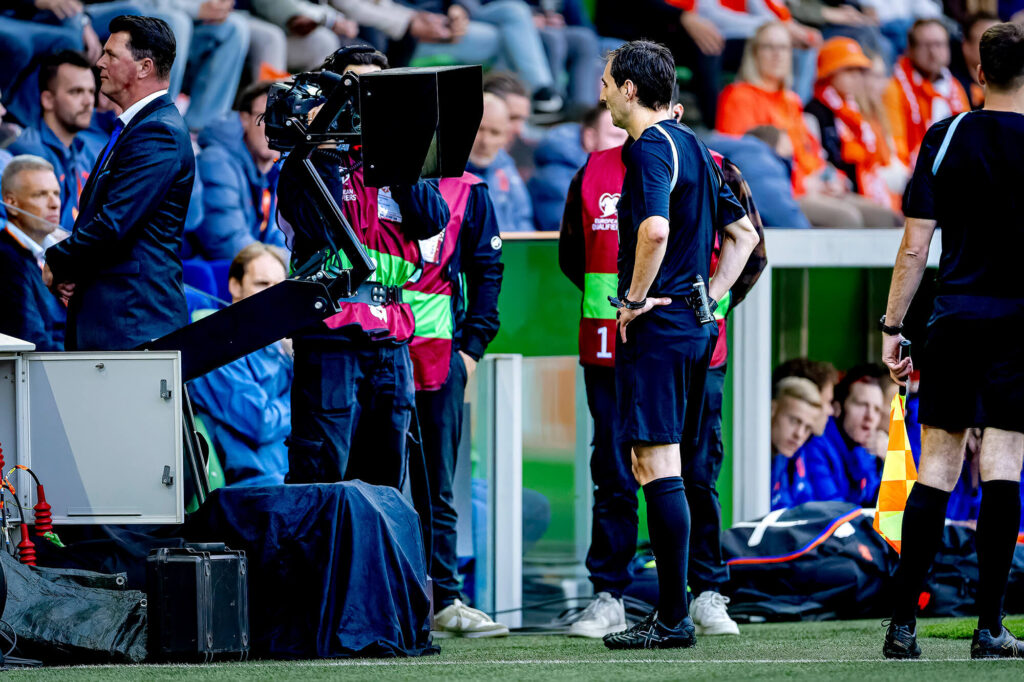
Controversies Around Offside and VAR
Critics argue that VAR has made offside calls too strict, affecting the spirit of attacking football. Supporters, on the other hand, believe it brings much-needed fairness.
To address this, football authorities have discussed changes — like giving attackers the benefit of the doubt or widening the “tolerance zone” for very tight decisions.
Why the Offside Rule Matters
Without the offside rule, attackers could camp near the goal, waiting for long passes. This would reduce the need for skillful build-up play and disrupt the balance between attack and defense.
The rule forces teams to:
- Time their passes carefully
- Time their runs intelligently
- Use defensive lines tactically
In essence, it encourages teamwork, strategy, and timing, which are central to beautiful football.
Teaching the Offside Rule to Beginners
One popular method to teach beginners is the “cone drill”:
- Set up 3 cones to represent the last defender, the attacker, and the ball.
- Show different setups to demonstrate when the attacker is offside and when they are not.
- Emphasize the timing of the pass.
Another approach is the “TV line method”, where you pause a replay right as the pass is made and ask: “Is the attacker behind the second-last defender?”
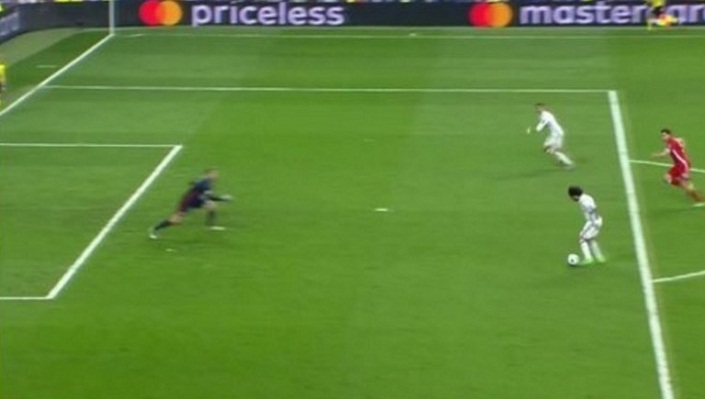
A Rule Worth Knowing
The offside rule may seem complicated at first, but with time, it becomes easier to spot and appreciate. It’s not about stopping goals — it’s about encouraging fairness, teamwork, and timing in the world’s most popular sport.
Whether you’re a new fan, a casual viewer, or someone just curious about football, understanding the offside rule gives you a deeper appreciation of the tactics and drama that unfold every matchday.
